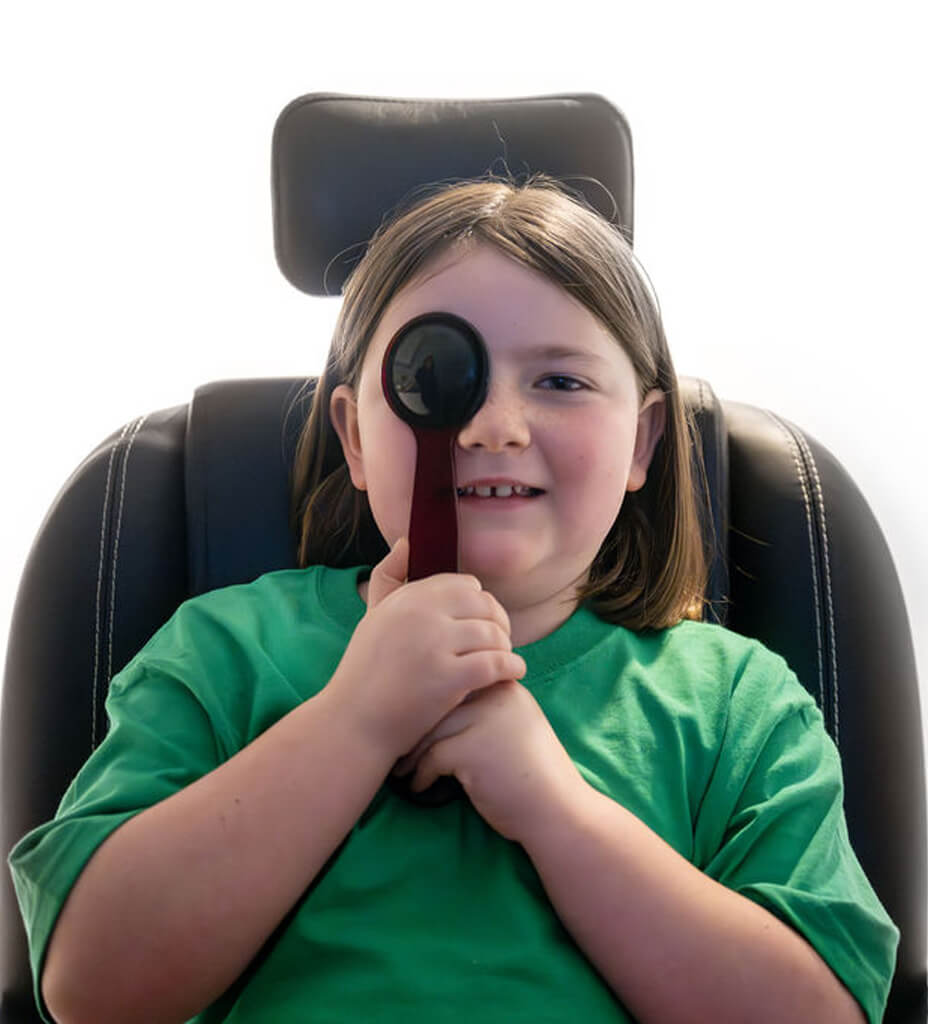Children’s Vision

Children’s Vision
Children’s vision develops and changes as they grow, and it’s important for parents to be aware of how their child’s vision might progress, as well as any signs or symptoms that could indicate a vision problem.
At birth, babies are born with blurry vision, but as they grow, their eyesight improves rapidly. By the time they are around 6 months old, they begin to develop more focus, depth perception, and the ability to track objects. By age 3, children should be able to see clearly enough to identify basic shapes, colors, and letters. However, some children may experience vision problems that can affect their ability to see clearly or focus on objects.
As children age, their vision continues to develop, but it’s important to monitor for any signs that may indicate a problem. Some common vision problems in children include:
- Nearsightedness (Myopia): This occurs when a child can see close objects clearly but has difficulty seeing distant objects. It often begins to develop around the age of 6 and can progress as they grow.
- Farsightedness (Hyperopia): This happens when a child has trouble seeing close-up objects but can see faraway objects clearly. This condition is common in younger children and may improve as they age.
- Astigmatism: When the eye is shaped irregularly, it can cause blurry or distorted vision. It may not be immediately obvious, but signs may include squinting or tilting the head to focus on objects.
- Strabismus (Crossed or Lazy Eye): This is when the eyes are not aligned properly, causing them to point in different directions. It can lead to double vision or a lack of depth perception.
- Amblyopia (Lazy Eye): This condition occurs when one eye is weaker than the other, and the brain starts to ignore the image from the weaker eye. Without treatment, it can lead to permanent vision loss in the affected eye.
Signs and Symptoms to Look For:
- Squinting or covering one eye to see better
- Frequent headaches or complaints of eye discomfort
- Difficulty reading or focusing on the blackboard or smartboard in school
- Poor performance in school despite effort, which may be related to undetected vision problems
- Tilting the head or holding reading material too close or too far away
- Eye rubbing or excessive blinking
- Double vision or seeing blurry images
- Sensitivity to light or frequent eye irritation
It’s important for parents to keep an eye out for these signs and ensure their children receive regular eye exams. Even if no obvious symptoms are present, early detection is key to treating and managing any vision issues before they impact a child’s development or learning.
At The The Eyes on Group, we recommend scheduling eye exams for children starting at 6 months of age, followed annually thereafter. Our pediatric eye exams are designed to identify vision problems early, ensuring that your child’s vision develops properly and that they have the best possible start for learning and life. Let us help you keep your child’s eyes healthy and their vision clear as they grow.